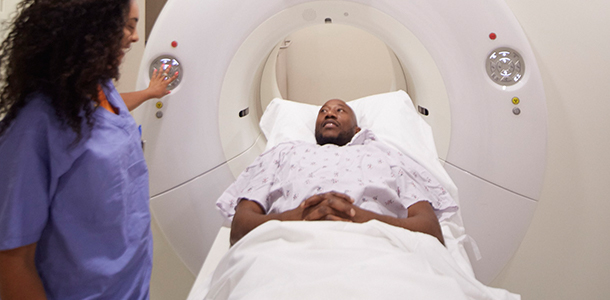The George Washington University Hospital is pleased to offer RapidArc radiotherapy technology, a major medical advance in Radiation Oncology.
Using this new approach to delivering image-guided, intensity-modulated radiation therapy (IG-IMRT), treatments that previously required at least 10 to 15 minutes can be finished in less than two minutes without compromising treatment quality. For patients who are receiving radiation treatment daily over several weeks, that can make a significant difference.
Why Does Speed Matter?
Quicker RapidArc treatments are easier on patients, who do not need to hold still for long periods of time to avoid movement that could compromise treatment accuracy. By reducing the time it takes to deliver IMRT and other highly-precise forms of radiation therapy, RapidArc has the potential to improve the quality of care and patient comfort.
RapidArc is well suited for a variety of anatomical sites, including prostate and head and neck cancer cases. RapidArc plans conform the treatment beam more closely to the tumor shape and protect the surrounding healthy tissues.
The Technology
RapidArc treatments are delivered on a medical linear accelerator that is outfitted with an On-Board Imager™ kV imaging system, which uses images to guide patient placement and treatment delivery. During a RapidArc treatment, the radiation is shaped and reshaped as it is continuously delivered from virtually every angle in a 360-degree revolution around the patient.
The beam shaping is accomplished using an important accessory called a multileaf collimator (MLC), a device with 120 computer-controlled mechanical “leaves” or “fingers” that can move to create openings of different shapes and sizes. During a RapidArc treatment, proprietary software varies three parameters simultaneously: the speed of rotation around the patient, the shape of the MLC aperture and the dose delivery rate.

